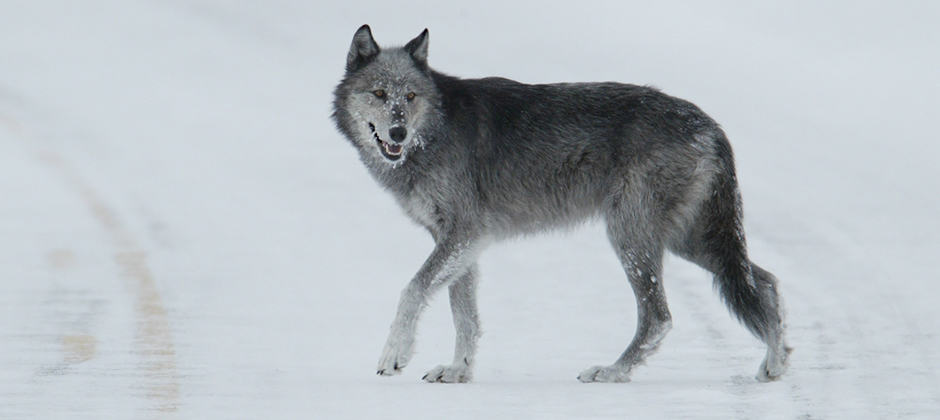Share this article
Wolf tale opens eyes to ‘the unknown world of wildlife’
“Every year I sit alone with a wolf,” Douglas Smith wrote. “The wolf doesn’t agree to this, as I catch it as part of a research program on wolves in Yellowstone National Park. The wolf is sedated, but we still sit together, alone, looking out at the great park.”
This wasn’t the sort of scientific paper that Smith, a TWS member and senior wildlife biologist at Yellowstone National Park, was accustomed to writing. But like other government employees, Smith was furloughed and looking for something to do with his five weeks away from work. He was also looking for a way to convey to a general audience something from his more than 40 years studying gray wolves (Canis lupus).
He took a chance with a perspective piece in the Washington Post, with a goal of nothing more than turning readers on to the wonders — and complexities — of nature.
“I cherish these moments,” Smith wrote, in the June 1 column under the headline “My time with ‘male 911.’”
“The quiet beauty all around and the wolf’s presence; it almost seems as if the wolf is talking to me. A look into wolf eyes will make you think deeply about life. The incessant, drowning-out noise of humanity gets turned off. I strain to understand what this life might be like. One time, when others were boarding the helicopter to fly out, leaving me alone with a wolf, I said: ‘If you don’t come back it’s okay. Leave me here forever with the wolf.’”
This type of writing was a departure for Smith, as his views toward communicating science have changed. “Really until 10 years ago, I was pounding away the idea that if it’s not a number, it’s not worth anything,” he said. “This experience has opened my eyes.”
If he wrote a paper in an academic journal, Smith said, he’d be lucky to get one email from a colleague. The Washington Post piece has received more than 100 comments online, plus a flood of emails, letters and phone calls Smith received personally.
“They call me up and say that it made them cry,” he said.
It’s something Smith believes scientists need to do more of.
“I actually strongly feel that all of us as wildlife biologists need to take that next step,” he said. “In the old days, they used to say that a study is not finished until it’s published. Now I would say a study is not finished until it’s published and communicated.”
He takes his cue from a quote by the noted Princeton economist and psychologist Daniel Kahneman he has hanging on his office wall: “No one ever made a decision based on a number. They need a story.”
Not that there weren’t numbers in Smith’s Washington Post piece. He weaved in science — litter size, dispersal, mortality. But he also told the tale of a single wolf — numbered 911 — from its birth in the Blacktail pack to its death in a confrontation with a rival pack.
“My main intent was to draw attention to the unknown world of wildlife — the life they have that no one pays attention to. I really worked hard to not have a divisive policy statement. It was just to draw attention that there’s so much happening to wildlife out there that we’re not even thinking about or paying attention to, and we need to — from all walks of life. Whether you’re pro-conservation or not, there are other life forms out there that deserve attention.”
For scientists, Smith said, it’s becoming more and more important to get those messages out.
“I’m worried,” he said. “A lot of environmental indicators are not pointing up. If we don’t get the general public involved, we’re in trouble. The news is not good. Unless we somehow get that message across, nobody’s going to listen to us.”
Header Image: A gray wolf walks in Yellowstone National Park. ©Yellowstone National Park








